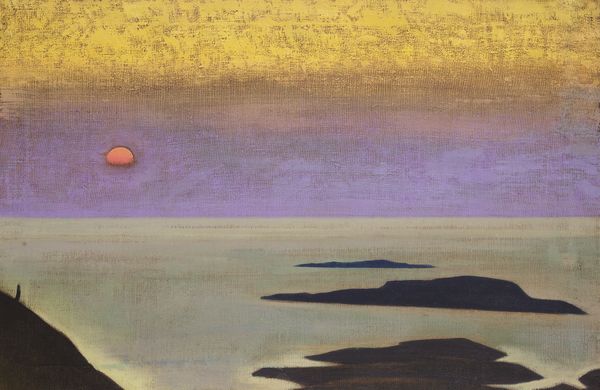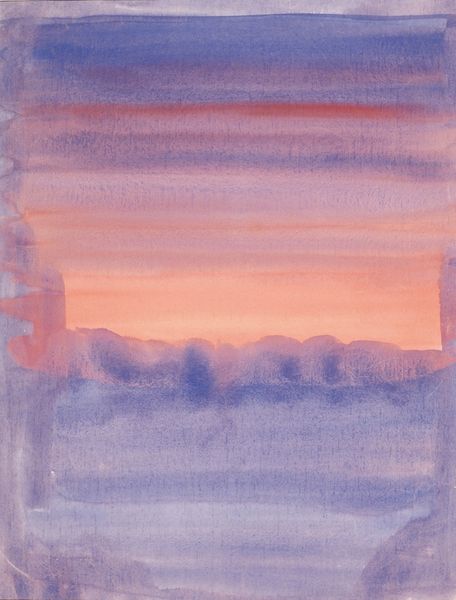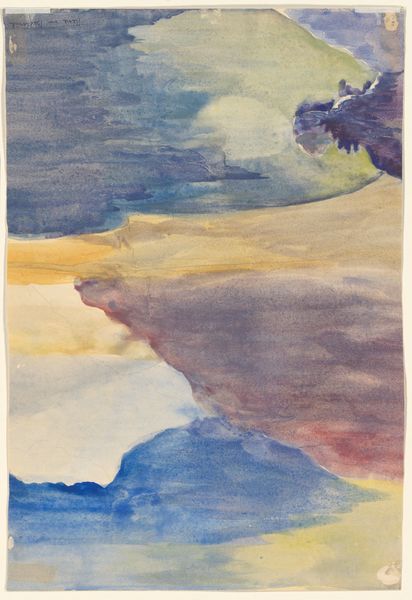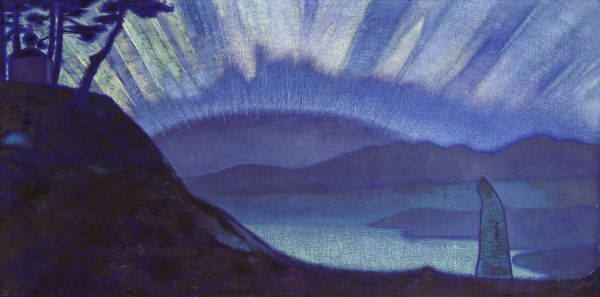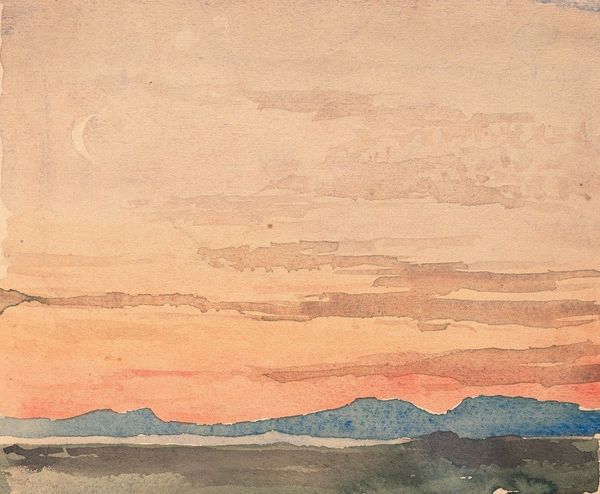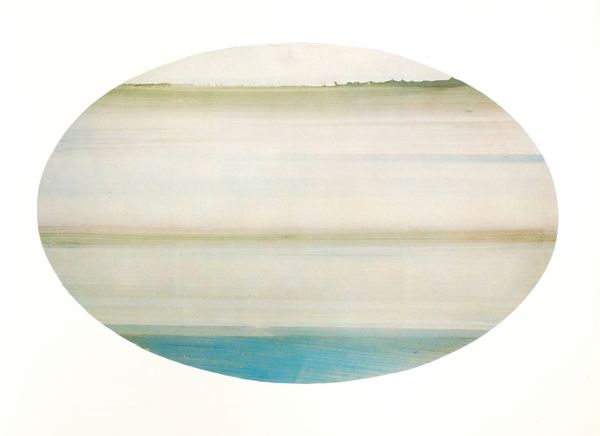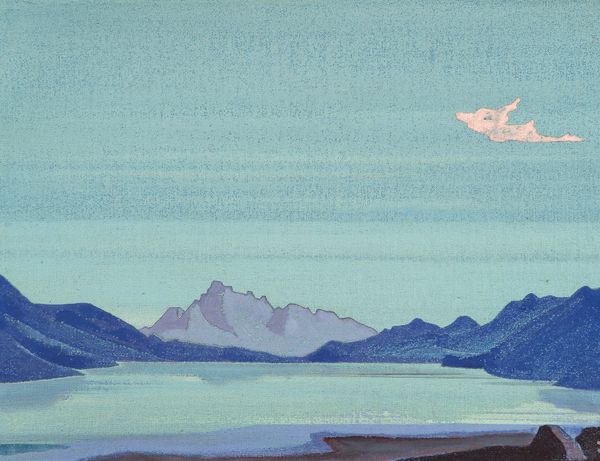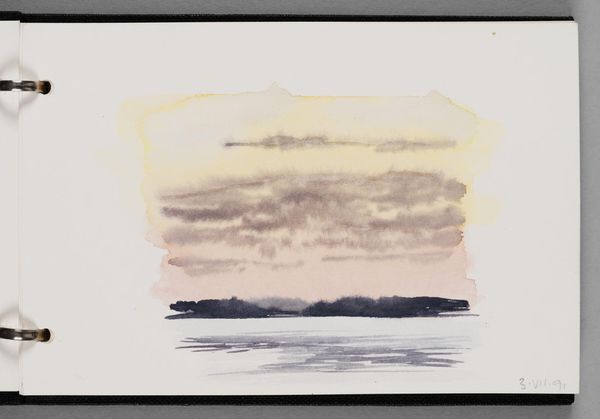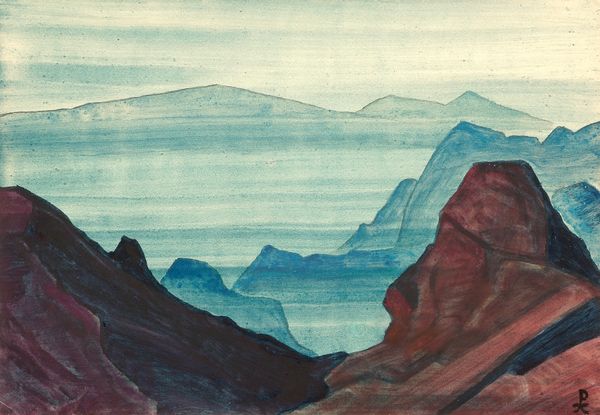
Bay of Tunis Through Porthole of Steamship Fürst Bismark, Tunisia, North Africa, Travel Sketch 1896
0:00
0:00
Dimensions: 12.5 × 17.5 cm (4 7/8 × 6 15/16 in.)
Copyright: Public Domain
Editor: So, this watercolor and pencil sketch is called "Bay of Tunis Through Porthole of Steamship Fürst Bismark, Tunisia, North Africa, Travel Sketch" by Daniel Hudson Burnham, and it dates to 1896. I'm really drawn to the circular composition – it almost feels like looking through a telescope. What catches your eye in this piece? Curator: The framing device is, indeed, compelling. It immediately imposes a structure – a boundary within which we assess the relationships between color, line, and form. Note how the hazy pink of the sky softly abuts the pale lilac hills. And how this interacts with the aquamarine plane. The sketch privileges a kind of atmospheric perspective through chromatic modulation. Editor: Chromatic modulation… meaning how the colors change? Curator: Precisely. Burnham is manipulating the colors to create depth and distance within the composition, contained as it is within that circular frame. The softness of the watercolor, too, lends itself well to an evocation of atmosphere. Have you considered the effect of the porthole itself? Editor: Not really. It feels like a window... I hadn't considered it as more than just a shape, a structural element. Curator: But isn’t the structure inherently meaningful? The very act of framing is a way of isolating and examining – a gesture, shall we say, of intense looking? Consider the implications. Editor: That’s true, it focuses our attention. I guess I hadn't thought about how the frame *is* the point. Thanks, I'll look at framing a lot more closely now. Curator: And I see now, even more distinctly, how the application of media underscores its structural intentions. A delightful synergy.
Comments
No comments
Be the first to comment and join the conversation on the ultimate creative platform.
